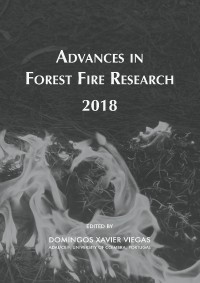Please use this identifier to cite or link to this item:
https://hdl.handle.net/10316.2/44671| Title: | Drivers of wildland fire behaviour variation across the Earth | Authors: | Fernandes, Paulo M. Sil, Ângelo Ascoli, Davide Cruz, Miguel G. Alexander, Martin E. Rossa, Carlos G. Baeza, Jaime Burrows, Neil Davies, G. Matt Fidelis, Alessandra Gould, James S. Govender, Navashni Kilinc, Musa McCaw, Lachlan |
Keywords: | fire spread rate;fireline intensity;fire modelling;fuel structure;fire weather;fire environment | Issue Date: | 2018 | Publisher: | Imprensa da Universidade de Coimbra | Journal: | http://hdl.handle.net/10316.2/44517 | Abstract: | Fire behaviour characteristics define the impacts on society and the environment. While wildland fire science has expanded to include the analysis of fire activity and effects across the globe, an understanding of global fire behaviour patterns and its drivers remains incomplete. We utilized the literature and unpublished datasets as sources for compiling a worldwide fire environment and fire behaviour database consisting of field-based experimental fires, planned-ignition prescribed fires and wildfires. Analysis of the database allows for the assessing of the influences of fuel and weather descriptors on fire behaviour characteristics at various scales, namely climate zone, biome, ecoregion, and vegetation type. The database comprises nearly 6000 fires. Fire spread rate and fireline intensity vary by five orders of magnitude (seven in the former case if smouldering is considered). Variation in fire-spread rate is dominated by fuel moisture content within Koppen-Geiger climates, except in tropical wet and hot desert climates, where wind speed prevails. Fuel structure is less important than weather-related variables, but it explains 35 and 30% of the variability within monsoon-influenced humid subtropical and hot summer Mediterranean climates, respectively. Fuel structure and load metrics increase in importance in regards to fireline intensity, being the dominant influence (66-91%) in hot semi-arid, temperate oceanic, and hot summer Mediterranean climates. Fuel moisture content exerts by far the major control in the variation in fire spread rate within broad vegetation types (forest, woodland, shrubland, grassland), while fuel structure metrics dominate the variation observed in fireline intensity, except in woodlands, where fuel moisture content is slightly more influential. Efforts to understand potential fire activity and fire regime shifts in relation to global change, and the formulation of policies for adaptive fire management will benefit from the results of this study. | URI: | https://hdl.handle.net/10316.2/44671 | ISBN: | 978-989-26-16-506 (PDF) | DOI: | 10.14195/978-989-26-16-506_154 | Rights: | open access |
| Appears in Collections: | Advances in forest fire research 2018 |
Files in This Item:
| File | Description | Size | Format | |
|---|---|---|---|---|
| drivers_of_wildland_fire_behaviour.pdf | 761.63 kB | Adobe PDF |  |
Items in DSpace are protected by copyright, with all rights reserved, unless otherwise indicated.
